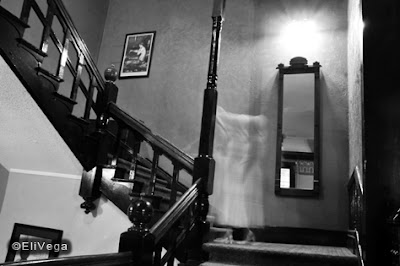SILHOUETTES
I have always enjoyed silhouettes in photography. The greatest challenge is knowing how to spell the word!!
Composition is the first key component for good silhouettes, as with any photograph. In addition to composition, there are three ingredients for successful silhouettes.
1) The subject--it has to describe itself, even with missing details.
1) The subject--it has to describe itself, even with missing details.
2) Lighting--It has to be dynamic, to compensate for the lack of details throughout the
image. I prefer early morning or late afternoon/evening.
3) Exposure--usually, depending on the time of day and where I aim my camera, the built-in
light meter usually gives me what I want. I take advantage of what it was designed to do.
However, there are times when I need to tell it what I want it to do, usually underexposing
the scene from a -1 to a -2, or more!
With that short introduction, let me now share some examples.
I'll start with the great American Indian Exposition held every August in Anadarko, Oklahoma. I've always had a lot of fun at that event. One particular year, I photographed several colorful tepees during the day. Applying the concept of un-labeling, which I talk about in my new book RIGHT BRAIN PHOTOGRAPHY, I noticed the shapes and designs of the tepees and thought they might look good at sunset.
I was at the east Texas lake of Lake O' The Pines. I went there right before sunset, hoping to see a good subject to photograph at sunset. I had nothing in mind. I went there with an open mind and ready for anything. Lucky me.
This guy was not going to stop fishing until there was no daylight left.After he was done and the sun had gone completely behind the horizon, he drove his pick-up truck up to where I was and asked me, "Did you get some good pictures?"
I got up extremely early one morning and headed down two-lane county roads, surrounded by farms and ranches southeast of the big city of Dallas, Texas. I love the photographic surprises I often get at that time of day. This particular morning, I stopped to check out an old barn. As I walked toward the barn, I saw another surprise! It wasn't the kind of subject I like in real life, but, photographically, I liked all the shapes, designs, geometry and play on light. I got as close as I comfortably wanted to on the spider and chose a very shallow depth of field, like maybe f/4, which turned the background into a world of surrealism.
In many respects, Dallas and Fort Worth, though hardly distinguishable nowadays as two separate cities, are miles apart. One early morning, I walked along a dry river bed, hoping to get a good early morning glimpse of the Fort Worth skyline. I turned back to see if there was anything behind me that might be interesting. This turned out to be my "keeper" for the day!
I knew that by aiming my camera toward the sun, the trees would lose all detail. I used an FLD filter and overexposed slightly to keep the scene from going too dark.
Okay, so we're still in Fort Worth, Texas. For weeks, I saw a freeway expansion project underway. The more I looked at it, I started seeing it through my imagination, and not just what my eyes could see. My imagination saw early morning vibrant colors, silhouettes, shapes, form, etc. With that in my mind, I got up early one morning to replicate what my imagination saw. All the elements came together for me that morning. All I had to do was wait until the workers arrived. They climbed up the scaffolding, then started walking on top of all the construction. When one of the guys got down to inspect something, "click."
I was at this river, which separates Texas and Oklahoma, just before sunrise. Before the sun broke the horizon, I saw this scene unfolding. I had to work fast to get what I wanted, before the sun came up. I underexposed the scene. As a result, the remains of an old fishing pier created a surreal yet spiritual feel. The reflection of one particular piece of the fishing pier skeleton looks like a cross in the water, surrounded by other mysterious floating shapes.
If you haven't already done silhouettes, I hope I have given you enough examples for you to get an idea of the variations you can create. If you don't like getting up early in the morning, then go out right before sunset, at sunset, and just after sunset. Scout around your area during the day and ask yourself, "Hmmm? I wonder what that might look like at sunset?"
Have fun with it! Contact me if you would like a 1-on-1 or small group lesson some early morning.....or late evening.































